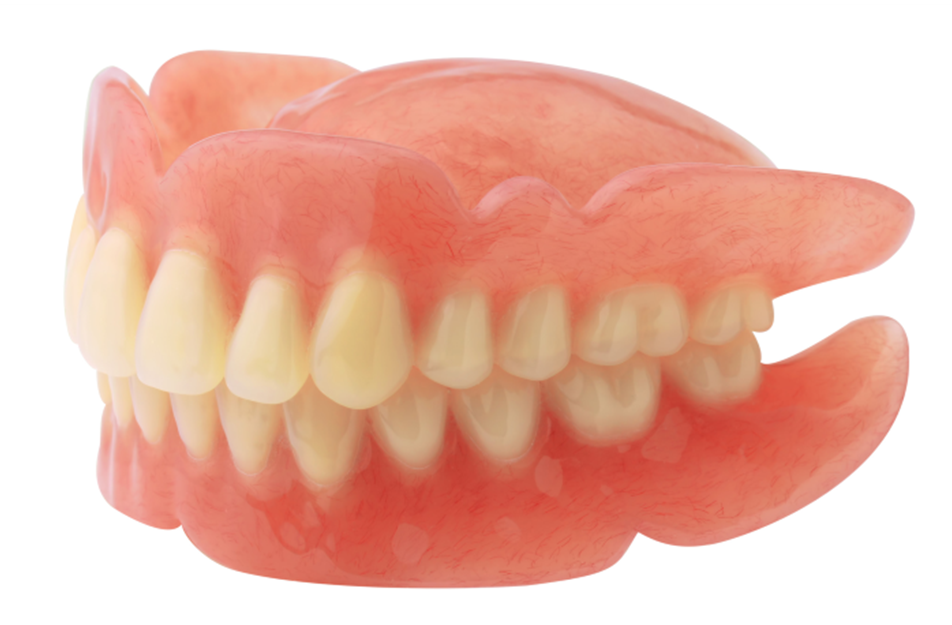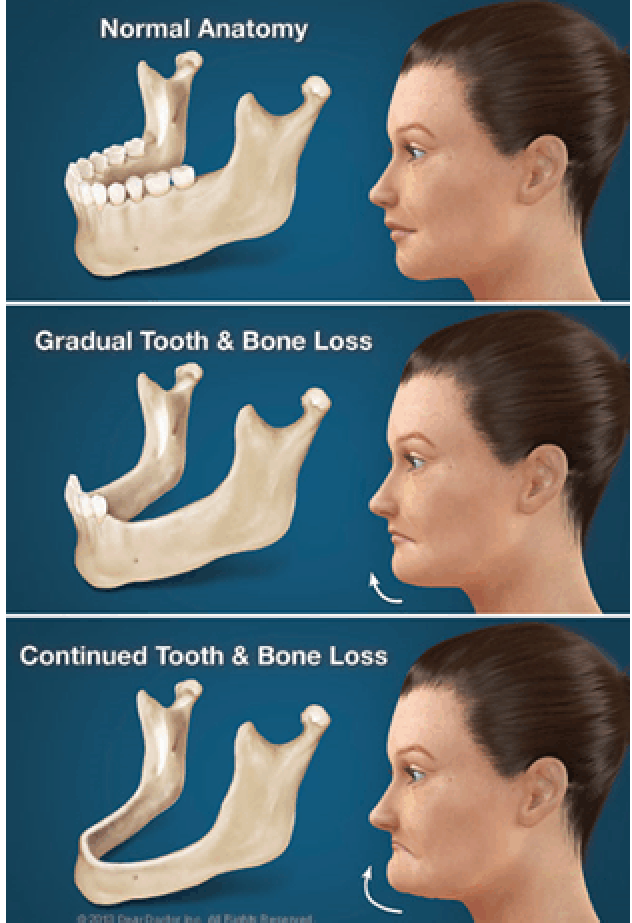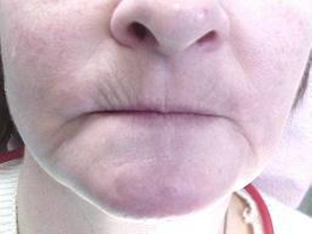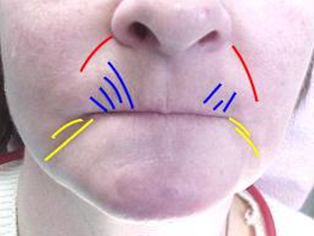What you need to understand about your dentures
When you are missing all of your teeth it is important to replace these teeth with dentures for quality of life and health. A successful denture most obviously fills in the space created by missing teeth but allows you to eat, chew, speak, smile normally without worry pain, discomfort and importantly also provides support to the face, lips and cheeks which prevents sagging and wrinkles.
If you still have remaining teeth a complete denture is considered an option of last resort so it is always recommend, if possible, you KEEP some or all of these remaining teeth. This is especially the case with your lower jaw. A successful complete denture can be made but it is always a compromise compared to your natural teeth
Denture Fabrication
As with other types of dentistry, proper time, care, skill and judgment must be exercised to constructing a successful denture with good RETENTION and STABILITY
RETENTION, is the denture’s ability to resist vertical dislodgement.
STABILITY is the denture’s ability to resist horizontal dislodgement–side to side or front to back. Lack of stability leads to sliding of the denture when biting, chewing or sometimes just talking with consequent breaking of the suction where it can just drop out unexpectedly.
To construct a denture with good retention and stability the dentist will ensure:
- That the right shape, size and shade of teeth are selected
- That these teeth are positioned properly in what we call the neutral zone
- There is maximum contact. or coverage of the ridges and roof of mouth (the bony parts) without extending too far onto the soft tissues and muscle attachments of your mouth- your cheeks, tongue, lips and soft palate,
- There is an accurate fit of the denture to your gum tissues with minimal voids
- The bite is balanced evenly on both sides when you bite or move side to side so the denture doesn’t drop or lose it’s seal or suction,
- The upper denture has a good peripheral seal. The denture needs to stay sealed with saliva, stopping air from getting underneath and losing its grip something called a post dam, must be added. A post dam is simply a little ridge on the back of your denture that presses just slightly into your palate to help keep the seal
Some people will have difficulty wearing a denture no matter how well it is made. This can be due to anatomy or other factors the patient presents with which may include:
- Size of your mouth- the more area for suction, the better, so bigger mouths will have more grip.
- Ridge height– the larger the ridges your denture sits on the better retention and stability.
- A very high palate -it is more difficult to get good suction than with a flat palate-
- Mandibular or maxillary tori or Bony growths- These may require a surgical procedure to remove
- The consistency of your ridges– firm or squishy (flabby). If they are firm the denture will not move at all and the seal will be good, if your ridges are flabby then there will be some movement towards your gums when you chew and this can break the seal. In some cases surgery may be required to correct this before making dentures.
- your level of muscle control during eating and speaking.
- the muscles responsible for moving your lips, cheeks and tongue– where they attach to your ridges and how they move during chewing, effects the shape, seal and control.
- your saliva which is a key ingredient in getting suction– it is not just the amount of saliva but also the quality of the saliva (how thick it is) that affects the suction. If you have dry mouth for any reason, the this lack of saliva will certainly affect your denture’s suction.
Because to these varied factors some patients may never be able to have a comfortable and stable denture. Fortunately, other options are available, particularly implants to help such patients obtain stable dentures.

Denture Appointments
The following is the typical appointments sequences and times for a complete dentures. Sometimes complications arise that will prolong the process. In addition if you are receiving a partial in combination with a complete denture– the number and length of appointments may be different.
- Appointment 1 (1 hour)
Before any type of denture is constructed whether it be complete dentures, immediate dentures or partial dentures it is important that a proper exam be performed so we can properly diagnose your needs. If you are new to the office or have never had a complete exam this will be your first appointment.
From this examination, if we find any pathology or active disease, we will try to resolve this first before the construct of new dentures.
If all your teeth are already gone, a complete denture will take about six appointments over about a one month period. The following are the typical appointments.
- Appointment 2 (1 hour)
Accurate Impressions (or moulds) of your upper and lower ridges are taken using special trays. From these impressions we makes models of your jaws and wax bases or blocks for measurements at the next appointment.
- Appointment 3 (1 hour)
Measurements are taken of how your jaws relate to one another and how much space is between them (bite relationship). The dentist will modify the wax bases to capture the jaw relationship. Next the teeth will then be selected for your denture. The size, shape and color of the teeth will depend on many factors, including reference points in your mouth, remaining natural teeth, your skin tone and the shape of your skull, photographs, etc. The modified wax bases and the mould and shade information are given to the dental laboratory so the teeth can be placed into the wax bases for the next appointment a week later.
- Appointment 4-Wax try-in (20 min.)
The teeth are held in the base with wax while you have a trial fitting. You can see how the denture looks and feels in your mouth, and dentist can make sure it fits and functions correctly and harmonizes with the rest of your face. If the denture is satisfactory we will send it to laboratory for processing and you will receive the denture(s) at the next visit booked a week later. If it is not satisfactory we will need additional try-ins until you are happy.
- Appointment 5- denture insertion
We will fit the processed denture into your mouth and make whatever minor adjustments are necessary for a comfortable fit. At this time, we will also go over the instructions for eating, speaking, denture care and oral hygiene. In some cases if the bite is off we will do additional bite adjustments
- Follow-up visits
Over the first few weeks or month with your new denture you may require minor adjustments appointments for better fit and comfort. When you call we try to get you in as soon as we can for what we expect will be a short 5 to 10 minute appointment.
Denture Problems
Bulky
For some, dentures can feel very bulky, particularly upper dentures which cover the entire roof of the mouth. This maybe an issue with those who gag easy
Loose lower denture
Complete Lower dentures(CLD) are not as stable as an upper denture . A CLD has little holding it in, retained by just the muscles of the lips and cheeks, and the tongue, and can be very challenging to chew with and wear. This is especially the case when the ridge is very flat and resorbed and many people with lower dentures do not wear them on a routine basis,
Denture tooth wear
With use denture teeth gradually wear down and the dentures become shorter.
Bone resorption
When the teeth have been removed the jaw bone starts to resorb or shrink- the bone is normally maintained by the natural teeth and the stresses of chewing. Without the teeth, the bone is no longer subject to the same stress, and therefore begins to change. As the bone shrinks and changes shape, more and more space forms between the base of the denture and the gums. In most cases the gum tissue remains, which is unsupported and flabby, and will completely fill the space. A flabby, soft ridge creates a stability issue because the denture moves around on the ridge much easier. Left untreated, bone resorption combined with denture tooth wear, can also have very negative effects on your facial profile and esthetics. Over time your face height- the distance between the nose and the tip of the chin- gradually shortens and the dentures slowly disappear under your lips, allowing the top denture to sit higher under the top lip, and the lower to drift below the bottom lip As a result, the upper and lower dentures began to fit together differently, bringing your lower jaw forward and the chin more pronounced. In some cases it is possible only to bite on the front denture teeth. During this period, the jaw muscles permanently change by shortening to accommodate to this new facial height. The shape of the face will also start to look different has the face shortens you will begin to notice deep diagonal lines forming between the corners of the lips and the chin. The lips flatten, and the mouth starts to resemble a thin “slit”.
Denture Adhesives
Denture adhesives can be very useful when you first get your new denture and are learning to adjusted to them. They will provide extra security by preventing the denture from moving or dropping especially with the lower denture. They are especially useful after insertion of immediate dentures to help hold the denture in place during the months it takes your gums to remodel before the final reline. This may be the only way to get them to stay up. Denture adhesives should not be used long-term and should definitely not be used as a substitute for a reline when your denture naturally start to loosen over time from bone resorption. They are messy and a pain to clean off and re-apply and will effect the stability if the amount and thickness you use to retain the denture become too much. Unfortunately in some cases, the use of denture adhesives may be a last resort where implants are not an option. This is where everything was done to construct a properly fitting denture but due to unfavourable factors, such as very resorbed ridges, or lack of saliva due to xerostomia, the denture is still loose and constantly moving during chewing and speech.
Relines
To prevent the ill-effects of resorption , it is recommended dentures are relined every two years. Relining dentures every two years keeps the denture well adapted to the bony ridge and does not give the body enough time to build flabby tissue.
New dentures
It is recommended to have dentures replaced every five to seven years. This does not allow the plastic teeth to wear significantly enough and makes it easier to fabricate dentures that keep the facial appearance intact and are more tolerable- Where one is not constantly clenching on them or having headaches and sore spots. If a denture is kept too long , the muscles start to adapt to the shorter face height and this makes it difficult and even impossible to build new dentures that can be tolerated, restores the original facial length, has a wider smile and longer teeth that one would expect from a new denture.



